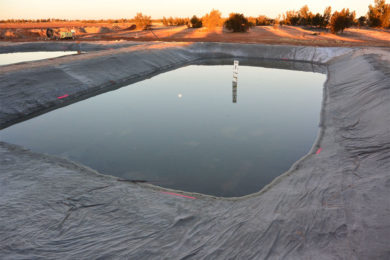Australian Potash says it has finalised the front-end engineering design (FEED) study for the engineering, procurement and construction (EPC) of Australia’s first high penetration renewable power solution on a greenfield sulphate of potash (SOP) minerals project development.
The study outlined a base case renewable power penetration rate of 53% with potential to rise to 87%, the company said. This would result in a 50% reduction in carbon dioxide emissions to 21,700 t/y compared with the hydro-carbon power solution base case outlined in the 2019 definitive feasibility study (DFS) for its Lake Wells SOP project, in Western Australia.
According to the company, the Mannheim (industrial) SOP production route produces 300% more carbon emissions than the route outlined for the Lake Wells SOP project on an equivalent tonne’s basis, positioning the asset as the lowest CO2 emitting potash project development in Australia.
Australian Potash Managing Director and CEO, Matt Shackleton, said: “Solar-SOP projects naturally sit at the lower end of the CO2 emissions curve by virtue of the natural evaporative process involved, and we challenged our project team to model a renewable power solution to maximise the…[project]’s long-term environmental sustainability.
“We are running competitive tendering processes for the eight packages of work defined to develop the LSOP, and bids have been received for the Power Station EPC package. This package was scoped to include renewable power generation, battery storage and an LNG backup reserve.
“Very pleasingly, these bids exceeded our design criteria both in terms of the rate of penetration of renewable power, and the impact that the renewable power solution has on reducing the LSOP’s carbon emissions. These are benefits that accrue to both our shareholders and the broader stakeholder and investment base.
“Solar-SOP production competes on a cost basis with the industrial Mannheim process, sitting at the lowest end of the global cost of production curve. The Lake Wells SOP project will produce SOP into that lowest quartile, and will also be one of the lowest carbon footprint potash projects globally.
“The company is pursuing organic certification for the suite of products to be produced at the Lake Wells SOP project, which will truly make the K-Brite™ branded SOP long-term environmentally sustainable.”
Key outcomes from the 2019 DFS on Lake Wells include:
- 30-year mine life producing 150,000 t/y of premium grade SOP utilising approximately 21% of the total measured resource estimate;
- Long mine life underpinned by 3.6 Mt reserve and 18.1 Mt measured resource estimate;
- Development capex of A$208 million ($146 million) with capital intensity of A$1,387/t; and
- First quartile industry operating costs of $262/t providing high cash operating margins.
The current program of works for the Lake Wells SOP project would see construction commence in the March quarter of 2021.










